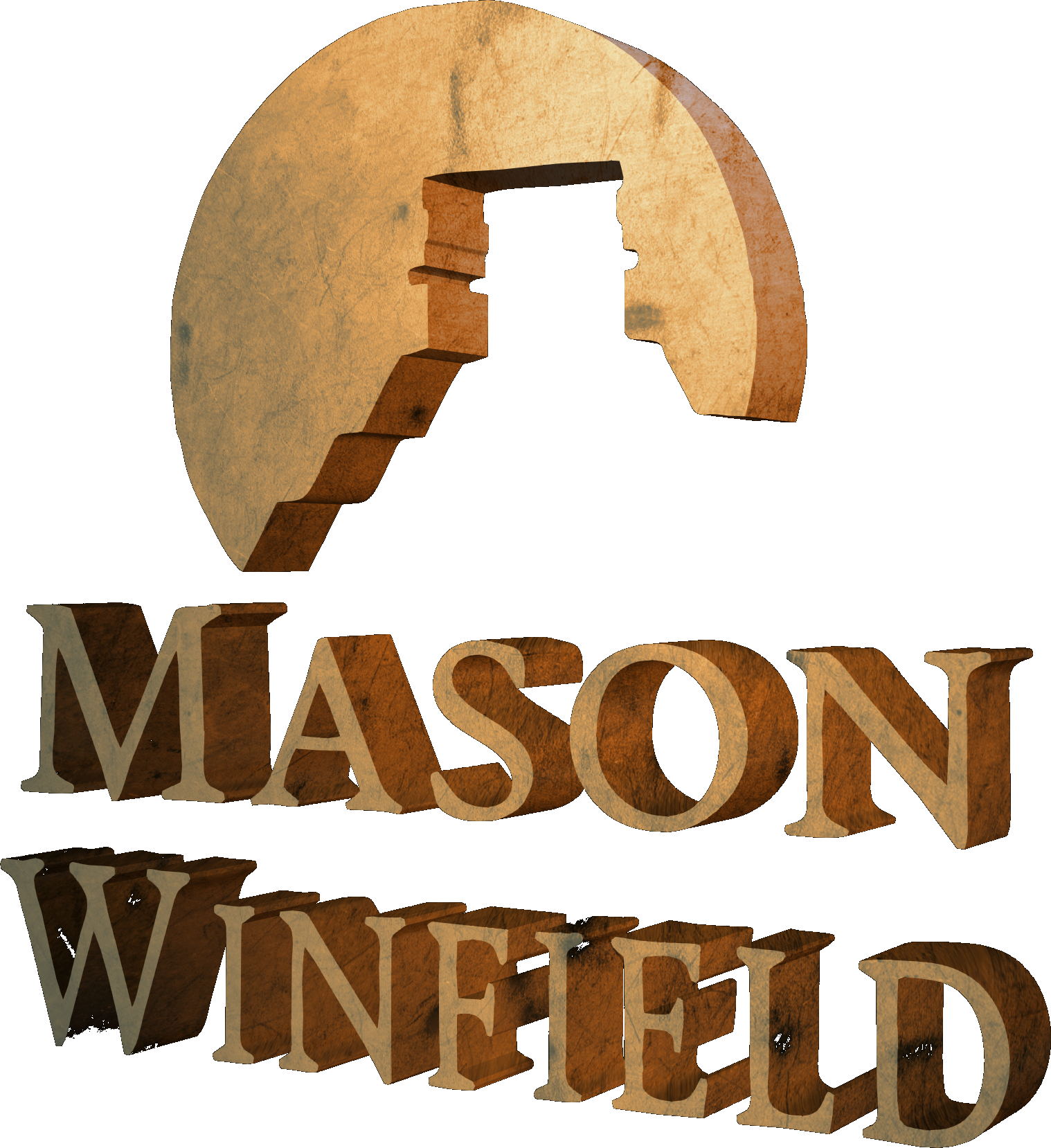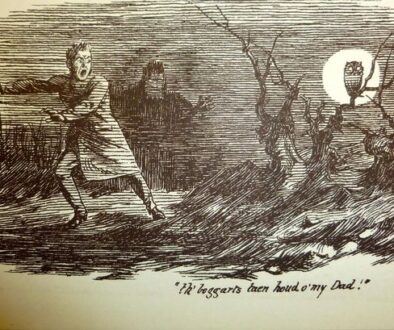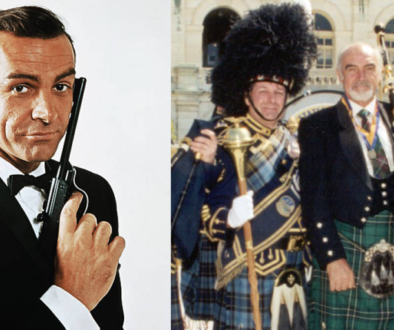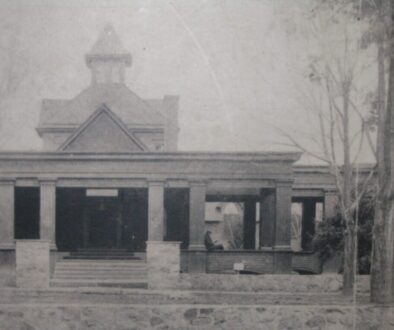Haunted Objects
One of my best friends in college went on to become a Celtic specialist. Like me, he had a fondness for out-of-the-way lore. On one of his trips to the British Museum in London, he fell into conversation with a couple of guards and asked them about ghost stories at the Museum. Neither guard had ever seen anything out of the ordinary – except for two exhibits to which the guard dogs reacted. One was a Mesoamerican artifact, a smoky grey obsidian mirror. The other was a set of Viking-age chessmen carved out of walrus ivory. The guard dogs, they said, had to be pulled past both displays, and they always bristled and snarled as they passed them.
It seems natural to us now to think that indoor spaces – buildings like houses, churches, theaters, and castles – can be haunted. We ought to know that rumor-cycles can gather around big outdoor spaces, too, including battlefields, valleys, disaster-sites, and stretches of road. What might be new for some of us is the idea that artifacts like swords and jewelry seem to be able to draw such an aura. Can a gem, a lamp, or a ring be haunted? Is that even the word to use?
I like bottom-line – lowest common denominator – definitions. What’s a genie that jumps out of a lamp but a specialized and especially serviceable form of a ghost, a supernatural apparition? Maybe that isn’t what most of us think when we say “haunted.” When it comes to artifacts, terms like “enchanted,” “cursed,” or “magic” might serve us better, since with many of the objects in world legend, no apparition/ghost/spirit is involved.
The idea that objects can store and radiate some sort of supernatural force is a very old one in world-tradition. We have fateful weapons like the sword Excalibur, the Spear of Light, and the Shield of Achilles. We have rumors of curses following jewelry like the Hope Diamond or Marie Antoinette’s necklace. We have enchanted effigies like dolls and carousel horses. We even have haunted cars, for God’s sake, like Stephen King’s fictional Christine. Two situations of objects – artifacts – with strange and still current reputations come to my mind, both in plain view in the British Museum in London.
The first of them is fairly prominent in occult circles, a polished, flinty-glass artifact often called “Montezuma’s Mirror” after the last Aztec Emperor to have owned it. This is supposed to be the artifact in which the Aztec royal astrologers started forecasting the end of the Empire as much as fifty years before the landing of Cortez. That’s pretty good psychic astrology for you. The item made its way to Europe in a hoard brought back by the Spaniards. In a few decades – the late 1500s – it ended up with Queen Elizabeth’s astrologer, the legendary Dr. John Dee (1527-1608/9?). Called a number of things including “Dr. Dee’s Magical Speculum,” and “the Devil’s Looking-Glass,” this seems to have been the object used by Dee’s Anglo-Irish rascal of a psychic Edward Kelley (1555-1597/8?) to look into the other realms and dictate back what he saw for Dee’s eager scribing. Also called “John Dee’s shewstone” (probably “showing-stone” in the lingo of the day), it was used for “scrying,” – gaining supernatural knowledge by gazing into crystals or other lucent and reflective items.
A few years back I was thinking about writing some fiction centered around this Mirror, and I tried to track the history of it after it landed on the east side of the Atlantic. Its journey to the British Museum was certainly circuitous – and prestigious. It had a predilection to find its way to famous owners, as if Cortez, Dr. Dee, and “last Aztec” Montezuma aren’t already impressive. Later owners included Horace Walpole, the Duchess of Norfolk, and possibly father and son scholars and antiquarians Isaac and Meric Casaubon. Its last private owner – I’m not sure about this – could have been Sir Hans Sloane (1660-1753), a British baron and an Anglo-Irish doctor whose personal collection of 71,000 artifacts was gifted to the nation at his death to form the core of the British Museum. All I’m sure about is that the fabulous object was with the Museum by 1966.
When I viewed the shiny disk, it was mounted in its display below head-height and slanted so that no Museum guest could look directly into it. I gather this was to discourage trouble from natural and not supernatural sources. Maybe people would be camped in front of it, jostling each other all day in hopes of getting a glimpse into the undiscovered country, maybe even using it like Edward Kelley for only the price of a museum pass.
My intuitive Native American friend Michael Bastine is neither Aztec nor Mexican, but he has lines of communication with Native elders on both American continents. Michael has the feeling that that the smoky obsidian mirror was probably brought to the Emperor as a gift by its discoverer, probably in the late 1400s. The Emperor would have had a stable of astrologers and other power-people in his court who would have made good use of it.
The other display past which the dogs dare not pass is called “The Lewis Chessmen,” a set of 84 walrus-ivory chess pieces thought to have been made in Scandinavia, probably Norway, in the 12th century. They were found in 1831 on Lewis Island in the Hebrides (an island chain in Northern Scotland). A Scot named Malcolm “Sprot” McLeod spotted a stone kist or storage-structure inside a sand dune that been exposed by the high tide. He and his trusty spade decided to see what was in it. When he set eyes on his first couple of chessmen, he tore off running, presuming that he’d found a nest of sleeping Little People. Sager heads – like his wife’s – realized they were more likely to be pricey than perilous.
The Viking theory of their origins holds up pretty well. Their material, walrus ivory, suggestive – the Vikings were an ocean-going culture – and the style is distinctly Viking-era Scandinavian. The Norwegians were running that part of the British Isles during the century the object was likely made, so trade to and fro would have been frequent. Plus, they simply look like Viking pieces. Some show clothing and armor that would have been accurate for the period. One piece, one of the rooks called “the Berserker,” features a wild-looking bearded guy biting on the edge of his shield, which the Berserkers were said to do before clashes.
Also called “The Uig Chessmen” for the bay by which they were found, they may have been hidden during a raid or battle for safekeeping. Others think they might have been stored there by a trader who never returned for them.
Why would a set of simple gaming pieces get this kind of reputation? In reality, I have no answer for you. Folklorically, I can say at least something. Chess was after all “the Game of Kings.” Games, gaming, riddling, and wagers are all the subjects of many a magical fable. For Celtic societies, chess was a game often played between Fairies and mortals. Speaking like a Spiritualist, now, maybe someone’s life was won or lost over a game with those pieces, and a bit of mojo went with them. If the exquisite Bergman film The Seventh Seal happened to be a true story, that board and set with which the Knight duels with Death would surely have some psychic story to tell.
But why, in reality, would any object acquire and carry such a charge, if you will, that would impress people and animals with its power? At least a theoretical explanation exists in preindustrial tradition of many world-societies. I’ll use an example from Native tradition in upstate New York.
The elders of my Longhouse/Iroquoian friends have the concept of orenda, the sacred “Force of Life.” It has correspondents about the world. (For the Egyptians the power-word was ma’at. For many Asians, it’s ch’i. The Greeks called it pneuma. For the Polynesians it’s mana. For the Hindu cultures it’s prana. My Saxon ancestors had a word for this generalized life-force that might have been something like Healu.)
The sacred force the Longhouse People called orenda was present in every living thing. Great humans – wizards, chiefs, healers, shamans, power-people – had a lot more of it than others. It was greater even than that, usually, in supernatural beings, who could spot it in each other by the mere sight. The Creator could make Himself look as insignificant as He wished, but other supernaturals could spot Him. It was only people, it seems, that He could completely fool with a guise-change.
Orenda could be invested in objects. Crystals, for instance, were thought to have a lot of this sort of power by their very nature. Artifacts like the Medicine Masks were thought to be immense repositories of this force due the investment of human energy and ceremony in their crafting.
Orenda, though, had another side. It was otkon, the corrupted, the dark side, of the Force. This was the energy of witchcraft. It was used selfishly and often hurtfully. Otkon, too, could be concentrated into objects in a way that was perceptible to the average human. By that logic alone, it should not be remarkable that certain artifacts like mirrors and chess sets could gain a sort of psychic reputation.
The real test of a theory about ancient and obscure subjects may not be asking for more information, especially when the tester knows that that information may never be found. The real test of a theory is how many other unexplained things it draws together into coherence. I’ll keep it as an open possibility that some objects can take on a power that blesses people and maybe even animals with exceptional experience.
FYI, I’ve heard a rebuttal of this tale about the guard dogs at the British Museum. I’ve heard that dogs are not and never have been allowed in any British museum and that this story could not have been true on that score. But if it’s one thing an objective study of the paranormal teaches you, it’s to be as suspicious of the first rebuttal as of the first report. Guard dogs have been and still are occasionally used in museums. I point you to the story of Barney, a Doberman Pinscher, who went berserk in a teddy-bear museum in England in 2006 and mauled a hundred collector-worthy teddies. (One of them that had belonged to Elvis Presley was valued then at $75,000.) I wonder to myself how they cleared and policed museums at night before the 21st century if not with guards and dogs. Until I have that settled, I won’t believe the story about mirror and chessmen could not possibly be true.




